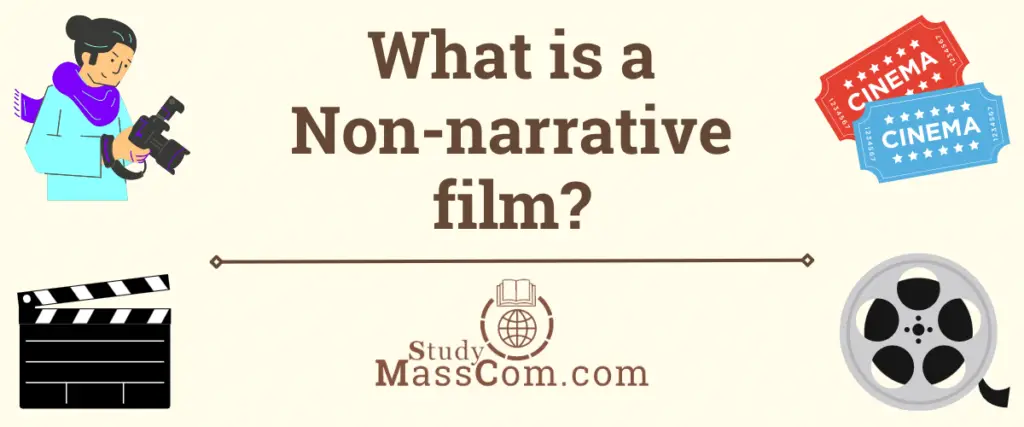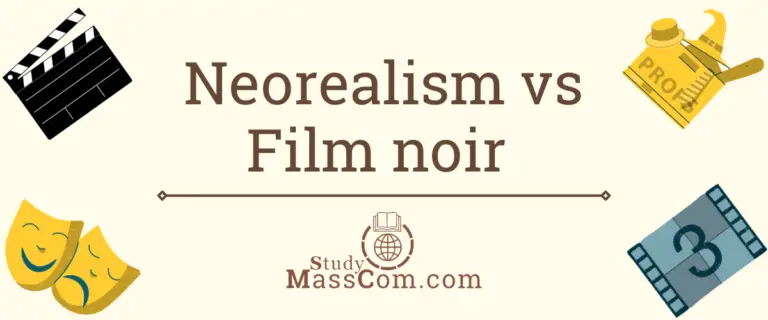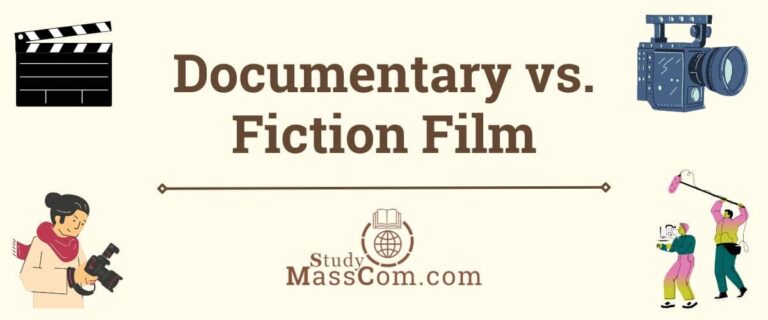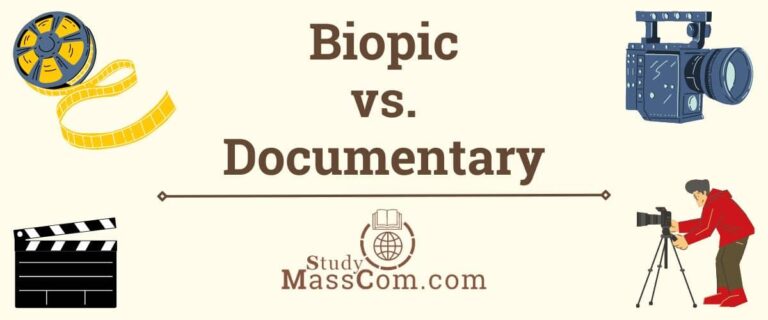What is a Non-Narrative Film? Types and Examples
Introduction
In the vast realm of cinema, narratives have always taken center stage. The majority of films tell stories, captivating audiences with their plots, characters, and conflicts. However, there exists another realm of filmmaking that breaks away from the traditional narrative structure. Non-narrative films are experimental works of art that transcend conventional storytelling, inviting viewers on a journey of visual and emotional exploration. In this blog post, we will delve into the captivating world of non-narrative films, their unique characteristics, and their significance in the realm of cinema.

Defining Non-Narrative Films
Non-narrative films, also known as avant-garde, experimental, or abstract films, challenge the established norms of storytelling. They often prioritize visual and aesthetic elements over linear narratives, aiming to evoke emotions, provoke thought, or stimulate the senses. These films take various forms, including abstract imagery, visual poetry, collages, found footage, and more. Instead of following a traditional plotline, non-narrative films embrace a more free-flowing, open-ended structure that encourages personal interpretation.
The Power of Visual Expression
One of the most remarkable aspects of non-narrative films is their emphasis on visual expression. These films employ a wide range of techniques, such as innovative cinematography, editing, and visual effects, to create unique and immersive experiences for the audience. By relying on evocative imagery, colors, shapes, and textures, non-narrative films can evoke deep emotions and prompt viewers to contemplate abstract concepts or introspective thoughts.
Exploring Themes and Concepts
Non-narrative films often explore themes and concepts that transcend traditional storytelling boundaries. They delve into philosophical, psychological, or social ideas through metaphorical representations, symbolism, and visual metaphors. These films can challenge viewers’ preconceived notions, expand their perspectives, and encourage introspection. By immersing audiences in a sensory experience, non-narrative films can evoke emotions and prompt reflection on how the deeper aspects of the human condition.
The Role of Sound and Music
Sound and music play a crucial role in non-narrative films. They work in harmony with the visual elements to create a multi-sensory experience. Soundscapes, ambient noises, or carefully curated musical compositions enhance the emotional impact of the imagery, intensifying the overall atmosphere and engaging the audience on a subconscious level. The combination of visuals and audio in non-narrative films creates a unique synergy that can be truly transformative.
The Influence and Significance
Non-narrative films have had a significant influence on the world of cinema. They challenge the boundaries of traditional filmmaking and inspire filmmakers to think beyond conventional narratives. These films encourage artistic experimentation, pushing the boundaries of visual storytelling and fostering innovation in the medium. They provide a platform for filmmakers to express their creative visions freely, unburdened by the constraints of plot-driven storytelling. Non-narrative films also serve as a source of inspiration for other art forms, including visual arts, music, and performance.
Appreciating Non-Narrative Films
To appreciate non-narrative films fully, viewers must approach them with an open mind and a willingness to embrace ambiguity. Unlike traditional narratives, these films do not always provide clear-cut answers or definitive meanings. Instead, they encourage personal interpretation, allowing each viewer to create their own unique experience. By immersing themselves in the visual and emotional journey offered by non-narrative films, viewers can gain a deeper appreciation for the artistic possibilities and the power of audiovisual storytelling.
Process of Non-narrative Films
Creating non-narrative films involves a unique and creative process that diverges from traditional narrative filmmaking. While the exact process may vary depending on the filmmaker’s vision and approach, here is a general overview of the steps involved in crafting non-narrative films:
#1 Conceptualization and Ideation
The process begins with the conceptualization of the film. Filmmakers explore themes, concepts, or emotions they want to convey through visual storytelling. They may draw inspiration from personal experiences, artistic influences, or philosophical ideas. The goal is to establish the underlying concept that will guide the film’s creation.
#2 Visual Research and Pre-production
Filmmakers engage in visual research, gathering references, images, or artistic inspirations that align with their concept. This research helps in establishing the visual style, aesthetic, and tone of the film. Pre-production tasks such as location scouting, set design, and costume selection may also be undertaken, depending on the project’s requirements.
#3 Planning and Storyboarding
Even though non-narrative films do not follow a linear story, planning and storyboarding are still valuable tools. Filmmakers outline the sequence of visual ideas, explore composition possibilities, and determine the overall flow of the film. Storyboarding aids in organizing the visual elements and maintaining coherence throughout the film.
#4 Production
The production phase involves capturing the footage or visuals required for the film. Filmmakers employ various techniques such as experimental cinematography, innovative camera movements, and unconventional framing to create visually engaging sequences. This phase may include shooting on location, using practical effects, or utilizing techniques like stop-motion, time-lapse, or compositing.
#5 Editing and Post-production
In non-narrative films, editing plays a critical role in shaping the final visual experience. Filmmakers select and arrange the footage to create a cohesive flow of images, exploring the rhythm, pacing, and juxtaposition of visuals. They may experiment with transitions, overlays, color grading, and visual effects to enhance the film’s aesthetic and evoke desired emotions.
#6 Sound Design and Music
Sound design and music contribute significantly to the atmosphere and emotional impact of non-narrative films. Filmmakers carefully select or create soundscapes, ambient noises, or musical compositions that complement the visuals. The sound elements are meticulously synchronized with the images to create a multisensory experience that deepens the film’s impact.
#7 Exhibition and Audience Engagement
Once the film is complete, it is ready for exhibition. Non-narrative films are often showcased in art galleries, film festivals, or specialized screening events dedicated to experimental cinema. Filmmakers have the opportunity to engage with audiences, provide insights into their creative process, and encourage personal interpretation and reflection.
Throughout the entire process, experimentation, artistic expression, and pushing boundaries are paramount. Non-narrative filmmakers are encouraged to explore innovative techniques, challenge established norms, and embrace the freedom to create visual poetry that transcends traditional storytelling.
Creating non-narrative films requires a balance between artistic vision and technical execution. Filmmakers continually push their creative limits to craft unique audiovisual experiences that evoke emotions, stimulate thought, and invite viewers into a realm of aesthetic exploration.
Types of Non-narrative Films
Non-narrative films encompass a wide range of styles and approaches, each offering a unique experience for viewers. Here are some notable types or categories of non-narrative films:
#1 Abstract Films
Abstract films prioritize the use of shapes, colors, textures, and patterns to create visual compositions that are detached from recognizable objects or narratives. They explore the aesthetics of form and movement, often relying on experimental cinematography and editing techniques to evoke emotions and engage the senses.
#2 Visual Poetry
Visual poetry films combine imagery, words, and sounds to create a poetic and lyrical experience. They often incorporate literary elements, metaphorical language, and evocative symbolism to explore emotional landscapes and philosophical concepts. Visual poetry films blur the boundaries between visual art and written poetry.
#3 Found Footage Films
Found footage films repurpose existing footage, often sourced from archival materials or pre-existing films, to create new narratives or evoke specific themes. Filmmakers manipulate and recontextualize the found footage through editing techniques, altering its meaning and creating a fresh visual language.
#4 Collage Films
Collage films assemble disparate visual elements, such as images, clips, photographs, or drawings, to create a new visual composition. These films embrace juxtaposition and fragmentation, exploring the connections and dissonance between different elements. Collage films often challenge linear narratives and encourage viewers to make their own connections and interpretations.
#5 Experimental Documentaries
Experimental documentaries blend non-fiction elements with unconventional storytelling approaches. They may incorporate observational footage, interviews, or real-life events but utilize experimental techniques to present these elements in a non-traditional and artistic manner. These films offer new perspectives on reality and provoke critical thinking.
#6 Structural Films
Structural films emphasize the formal qualities of cinema, often employing repetitive patterns, rhythmic editing, and mathematical structures. These films explore the fundamental elements of filmmaking, such as duration, framing, and sequencing, pushing the boundaries of perception and challenging conventional viewing experiences.
#7 Visual Essays
Visual essays combine images, voiceover, and textual elements to present an argument or explore a particular topic or idea. These films engage with intellectual or social themes, offering a thought-provoking exploration through visual means. Visual essays encourage viewers to reflect on complex subjects and question established norms.
Examples of Non-narrative Films
Here are a few examples of notable non-narrative films that showcase the diverse range of approaches and styles within this genre:
Koyaanisqatsi (1982) – Directed by Godfrey Reggio, this visually stunning film explores the relationship between humans, nature, and technology. Through a montage of mesmerizing imagery set to the music of Philip Glass, Koyaanisqatsi presents a powerful commentary on the impact of modern civilization.
Baraka (1992) – Directed by Ron Fricke, this non-narrative documentary film takes viewers on a global journey, capturing stunning landscapes, cultural rituals, and human experiences. With breathtaking cinematography and an immersive soundtrack, Baraka offers a meditative and thought-provoking cinematic experience.
Un Chien Andalou (1929) – A groundbreaking collaboration between Salvador Dalí and Luis Buñuel, this surrealist short film is a classic example of non-narrative cinema. Through a series of dreamlike and often unsettling images, Un Chien Andalou challenges traditional storytelling conventions and invites viewers to explore the depths of the subconscious.
Meshes of the Afternoon (1943) – Directed by Maya Deren, this avant-garde experimental film is a landmark in the realm of non-narrative cinema. Through its use of dream logic and symbolic imagery, Meshes of the Afternoon explores themes of identity, memory, and the blurred boundaries between reality and illusion.
Powaqqatsi (1988) – A sequel to Koyaanisqatsi, directed by Godfrey Reggio, Powaqqatsi continues the visual exploration of human existence and its relationship with technology and globalization. With its captivating visuals and evocative score, the film offers a poetic and thought-provoking meditation on the human condition.
These films represent just a small sample of the vast world of non-narrative cinema. Each one offers a unique artistic vision, pushing the boundaries of visual storytelling and inviting viewers to engage with the imagery and concepts on a deeper level.
Conclusion
Non-narrative films are a captivating and essential part of the cinematic landscape. They break away from traditional storytelling structures, focusing on visual expression, experimentation, and evoking emotions. Through innovative techniques, non-narrative filmmakers create immersive experiences that challenge viewers’ perceptions, expand their horizons, and encourage personal interpretation. These films explore themes and concepts beyond the confines of linear narratives, often using symbolism, metaphor, and visual poetry to convey their messages. By prioritizing the power of visuals, non-narrative films engage the audience on a sensory level, prompting introspection and contemplation.
Non-narrative cinema has a significant influence on the world of filmmaking, inspiring artists to think beyond conventional storytelling and push the boundaries of visual creativity. It serves as a platform for artistic experimentation, fostering innovation and pushing the medium forward. Additionally, non-narrative films have an impact beyond cinema, influencing other art forms and inspiring new ways of creative expression.
FAQs
A non-narrative film refers to a type of filmmaking that does not follow a traditional storytelling structure or rely on a linear narrative. Instead, it explores visual and auditory elements, often emphasizing artistic expression, mood, or abstract concepts. Non-narrative films may focus on experimental techniques, visual patterns, rhythmic editing, or symbolic imagery to evoke emotions and provoke thought. These films often challenge the conventions of traditional storytelling and engage the viewer in a more abstract and subjective cinematic experience. Examples of non-narrative filmmakers include Stan Brakhage, Maya Deren, and Chris Marker.



